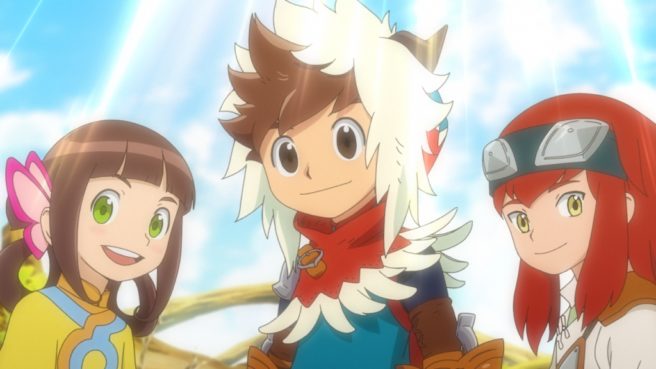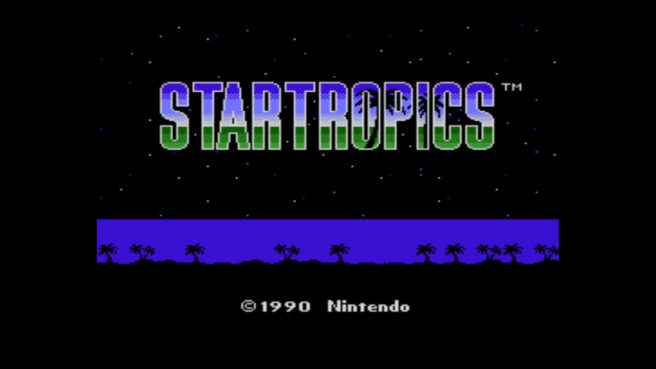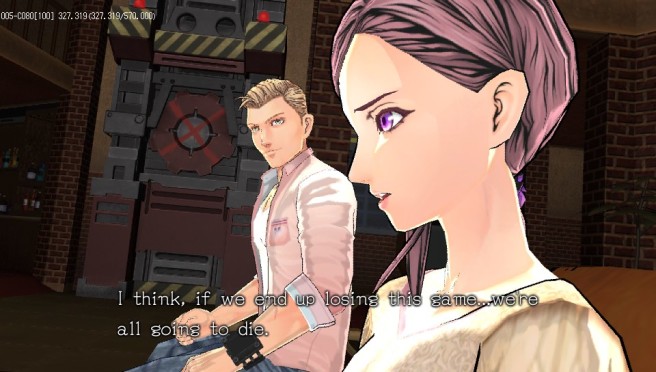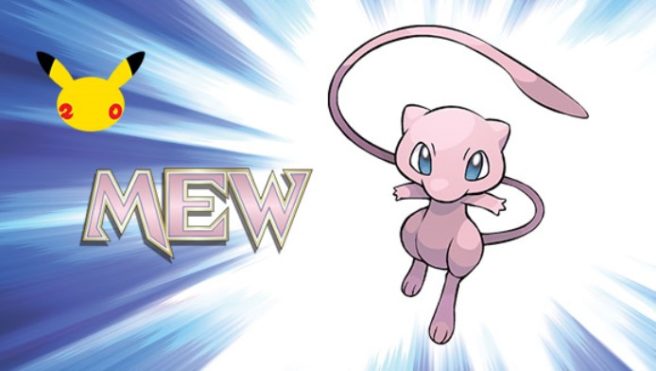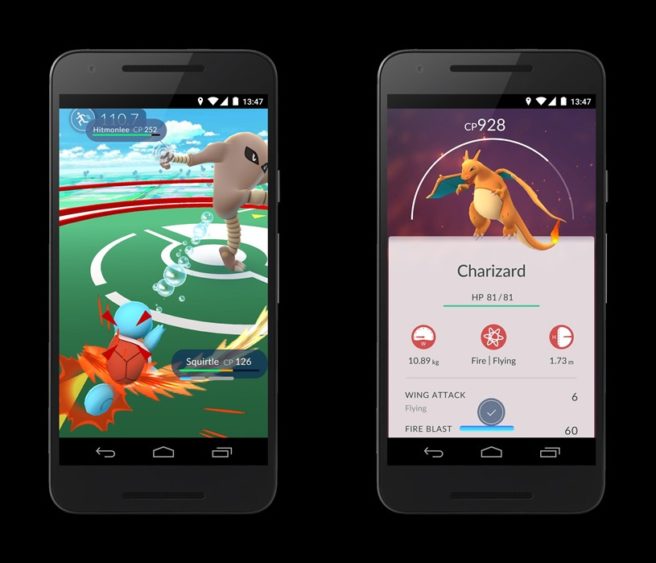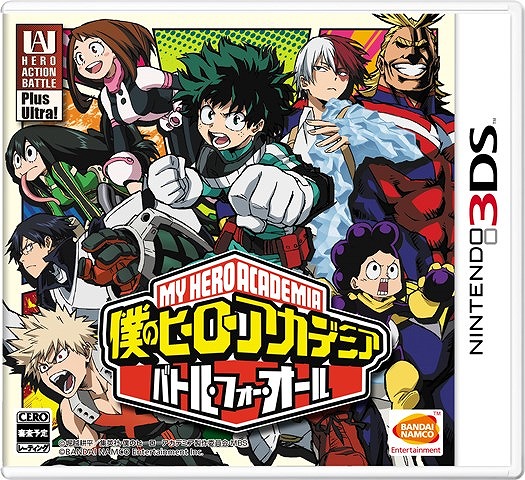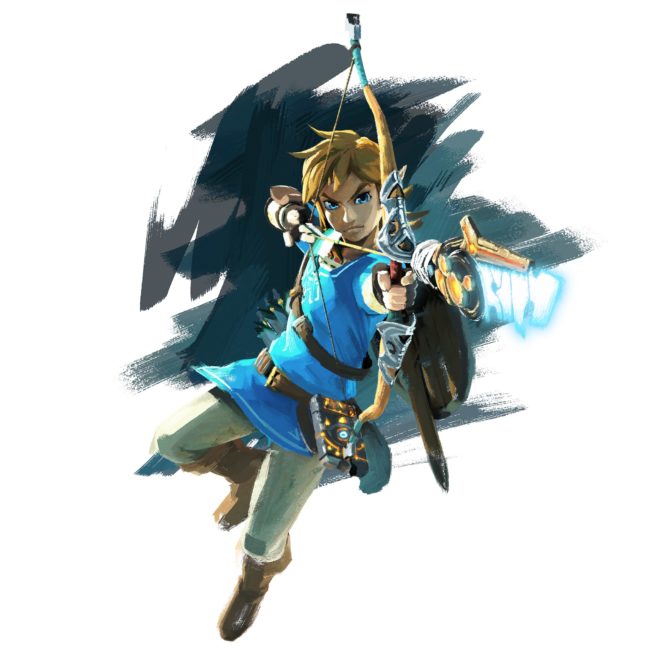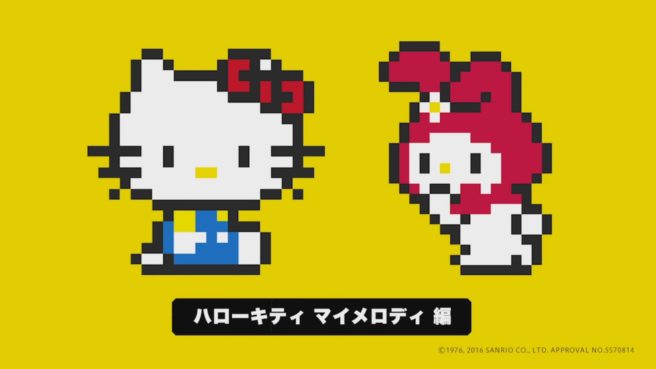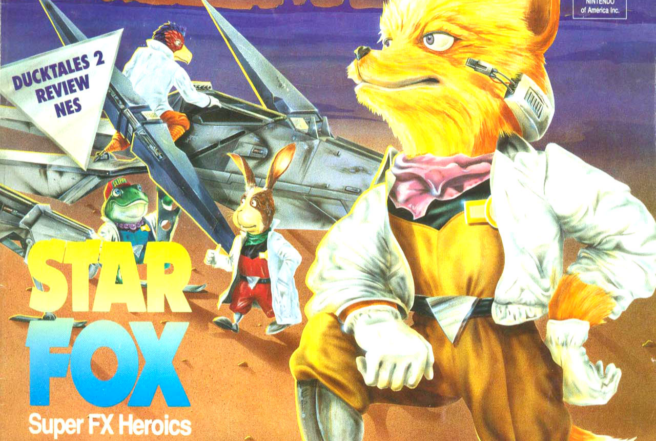Zelda Wii U to have two extended demos at E3, media asked to set aside 90 minutes
Posted on 9 years ago by Brian(@NE_Brian) in News, Wii U | 21 Comments
Update: We now have confirmation on this (thanks immewnity). The email sent out to press does make mention of the “two extended demos” that will let them “step into the wilds of Hyrule and explore some of the grasslands, forests and mountains that they’ve been given mere glimpses of to date.” Media are recommended to set aside 1-1.5 hours.
Zelda Wii U will be the one and only game playable from Nintendo at E3 2016 next month. Outlet finder.com.au now claims to have some information about its appearance.
The site notes, “Nintendo is informing media that there will be two extended demos of the Wii U version to play at the booth and are being asked to set aside 90 minutes to make the most of the gameplay.” I’ve not heard about this personally, though that doesn’t mean that the report from finder.com.au is inaccurate. We’ll go ahead and mark this one as a rumor to be on the safe side.
More: E3 2016, top, Zelda Wii U
Monster Hunter Stories: Ride On anime receives first trailer and details
Posted on 9 years ago by Brian(@NE_Brian) in General Nintendo, News, Videos | 4 Comments
Monster Hunter Stories received a big blowout today. On top of Capcom announcing things like a release date and amiibo, we have a trailer and plenty of details about the anime, Monster Hunter Stories: Ride On.
First, the video:
Monster Hunter Stories: Ride On will start airing on October 8, every Sunday at 8:30 AM on Fuji TV. It’s also been 10 years since Fuji TV last has a new anime slot. As one would expect, it’s based on the new video game.
The main character is named Ryuto, who rides a Rathalos. He has childhood friends Cheval and Lilia, both of them riding on a Rathian.
More: anime, Capcom, Monster Hunter Stories, top
Nintendo Download (5/26/16, North America) – Dragon Fantasy, Futuridium, StarTropics, more
Posted on 9 years ago by Brian(@NE_Brian) in 3DS eShop, News, Wii U eShop | 4 Comments
This week’s North American Nintendo Downloads are as follows:
Wii U Download
Dragon Fantasy: The Black Tome of Ice – $9.99
Dual Core – ?
Futuridium EP Deluxe – $7.99
Rynn’s Adventure: Trouble in the Enchanted Forest – $9.99
Wii U Virtual Console
StarTropics – $4.99
Zoda’s Revenge: Star Tropics II – $4.99
3DS Download
Conveni Dream – $5.00
Dragon Fantasy: The Black Tome of Ice – $9.99
Epic Word Search Collection 2 – $7.99
Infinite Dunamis – $4.99
3DS DLC
Fire Emblem Fates – New DLC Maps: III: The Changing Tide – Shiro’s wounded band must seize an opportunity. Part 3 of Heirs of Fate for the Fire Emblem Fates: Birthright and Fire Emblem Fates: Conquest games is now available for $1.99.
Fire Emblem Fates – Map Pack 2 DLC – Across dimensions, other versions of the Hoshidan and Nohrian children are under attack. Born and raised in the Deeprealms, these fledgling warriors must now rise up to save themselves and their parents as they unravel the mystery of their adversaries. In this six-map series for the Fire Emblem Fates: Birthright and Fire Emblem Fates: Conquest games, units leveled up in the main game cannot lend support. Devise a strategy using a fresh team and reap the rewards, but only if all of your units survive. You can receive all six maps as they are released by purchasing Map Pack 2 for only $7.99.
eShop Sales
Wii U / 3DS
– Angry Video Game Nerd Adventures (Wii U and Nintendo 3DS) is 50 percent off (reduced from $9.99 to $4.99) until 8:59 a.m. PT on June 7.
– Sonic Boom: Rise of Lyric (Wii U), Sonic Generations (Nintendo 3DS) and more games from SEGA are on sale until 8:59 a.m. PT on June 6.
Wii U
– Inside My Radio is 20 percent off (reduced from $14.99 to $11.99) until 8:59 a.m. PT on June 8.
– The Quiet Collection is 40 percent off (reduced from $4.99 to $2.99) until 8:59 a.m. PT on June 6.?
3DS
– Stella Glow, Etrian Odyssey 2 Untold: The Fafnir Knight and more games from ATLUS are on sale until 8:59 a.m. PT on June 6.
– Real Heroes: Firefighter 3D is 50 percent off (reduced from $9.99 to $4.99) until 8:59 a.m. PT on June 2.
– Toy Defense is 30 percent off (reduced from $3.99 to $2.79) until 8:59 a.m. PT on June 16.
– SteamWorld Heist is 25 percent off (reduced from $19.99 to $14.99) until 8:59 a.m. PT on June 9.
– Terraria is 25 percent off (reduced from $19.99 to $14.99) until 8:59 a.m. PT on June 2.
– Lionel City Builder 3D and Cube Creator 3D from Big John Games are on sale until 8:59 a.m. PT on June 8.
Source: Nintendo PR
More: Nintendo Download, top
Zero Time Dilemma details – characters, gameplay, more
Posted on 9 years ago by Brian(@NE_Brian) in 3DS, News | 4 Comments
Zero Time Dilemma is about a month away from release. With that in mind, Famitsu shares another update on the game with a four-page feature. The magazine provides some new details while recapping some previously-known information.
Head past the break for our rundown of Famitsu’s article. Note: some tidbits have details that some may consider to be spoiler territory.
Mew to be distributed in next month’s Pokemon newsletter
Posted on 9 years ago by Brian(@NE_Brian) in 3DS, News | 10 Comments
GameStop held a Mew distribution for the Pokemon games back in February. If you missed out on that, you may want to make sure you’re signed up for the Pokemon Trainer Club newsletter. The Mythical Pokemon will be going out to subscribers next month.
You’ll be able to download Mew in Pokemon X, Y, Omega Ruby, and Alpha Sapphire. Just make sure you’re registered for the newsletter. Codes will need to be redeemed by August 31.
New Pokemon GO details revealed as U.S. field test commences
Posted on 9 years ago by Brian(@NE_Brian) in Mobile, News | 1 Comment
The Pokemon Company and Niantic have revealed new details about Pokemon GO. Today’s news comes as an early user test begins in the United States today. Tests are already underway in Japan, Australia, and New Zealand as well.
Find all of today’s information below. You can also look at some new screenshots in the attached gallery.
Pokémon GO will allow players to find and catch more than a hundred different Pokémon as they explore the world around them. When players approach a Pokémon in the wild, their phones will notify them and give them the opportunity to engage and catch the Pokémon using the phone’s touch screen to throw a Poké Ball. Poké Balls and other special items can be found at PokéStops, which are located at interesting places such as public art installations, historical markers, and monuments. During gameplay, Pokémon GO players will be encouraged to join one of three teams and engage in Gym battles with other teams. After joining a team, players will gain the ability to assign their Pokémon to Gyms. Like PokéStops, Gyms can be found at real locations in the world.
Battling is essential to any Pokémon game, and Pokémon GO is no different. Players can battle using the Pokémon they’ve caught to gain control of a Gym. By using their own Pokémon’s attacks and dodging incoming attacks by swiping left and right on the screen, Pokémon GO players can defeat the defending Pokémon to reduce the Gym’s Prestige. Once the Gym’s Prestige reaches zero, the defending team loses control of the Gym, and the victor’s Pokémon can be assigned to defend the Gym. When a team has control of a Gym, team members can increase its Prestige and level by training their Pokémon with other defending Pokémon. As the Gym gets to a higher level, the defending team gains the ability to assign more Pokémon to defend it. They can also team up with friends and battle together at a rival Gym to take down stronger Gyms faster.
More: Niantic, Pokemon GO, top
Media Create sales (5/16/16 – 5/22/16)
Posted on 9 years ago by Brian(@NE_Brian) in 3DS, New Nintendo 3DS, News, Wii U | 5 Comments
The latest Japanese hardware sales from Media Create are as follows:
PS4 – 18,430
New 3DS LL – 12,051
Vita – 10,954
Wii U – 4,109
New 3DS – 2,552
PS3 – 1,001
3DS – 700
3DS LL – 103
Xbox One – 72
For comparison’s sake, here are the hardware numbers from last week:
PS4 – 23,239
New 3DS LL – 13,623
Vita – 12,299
Wii U – 3,896
New 3DS – 3,021
PS3 – 997
3DS – 823
3DS LL – 128
Xbox One – 115
And here are the software charts:
1. [PS4] Uncharted 4 – 21,155 / 149,879
2. [3DS] Kirby: Planet Robobot – 19,383 / 268,334
3. [PS4] Homefront: The Revolution – 9,422 / NEW
4. [3DS] Yo-kai Sangokushi – 8,913 / 518,492
5. [PSV] Kenka Bancho Otome – 8,534 / NEW
6. [PSV] Jikkyou Powerful Pro Baseball 2016 – 6,763 / 126,073
7. [PS4] Doom – 6,164 / NEW
8. [PS4] Jikkyou Powerful Pro Baseball 2016 – 6,057 / 140,448
9. [3DS] My Hero Academia: Battle for All – 5,607 / NEW
10. [PSV] Minecraft: PlayStation Vita Edition – 5,564 / 774,096
11. [PS4] Battleborne – 5,145 / NEW
12. [WIU] Splatoon – 5,038 / 1,367,268
13. [WIU] Super Mario Maker – 4,088 / 878,493
14. [3DS] Dragon Quest Monsters: Joker 3 – 4,047 / 596,369
15. [PS3] Jikkyou Powerful Pro Baseball 2016 – 3,952 / 80,392
16. [PSV] Period Cube: Torikago no Amadeus – 3,850 / NEW
17. [WIU] Star Fox Zero / Star Fox Guard – 3,735 / 36,177
18. [3DS] Animal Crossing: New Leaf (Happy Price Selection) – 2,373 / 47,974
19. [3DS] Mario & Sonic at the Rio 2016 Olympic Games – 2,319 / 161,048
20. [PS4] Dying Light: Enhanced Edition – 2,118 / 15,336
More: charts, Japan, Media Create, sales, top
Nintendo NY hosting Zelda extravaganza next month, 500 fans can play Zelda Wii U
Posted on 9 years ago by Brian(@NE_Brian) in General Nintendo, News | 22 Comments
Between June 14 and June 19, 500 fans will be given the opportunity to play the new Zelda game on Wii U at Nintendo NY. Those who are interested will need to be involved with Super-Fan Signup Day on June 11. The first 500 eligible people in line when Nintendo NY opens at 9 AM ET will receive a wristband that they can exchange for a ticket, guaranteeing them a spot to play the game during selected times June 14 – June 19.
Fans will be invited to watch gameplay from the new Zelda title on June 14 at 12 PM ET, which will be live-streamed from Nintendo’s E3 booth. At 3 PM ET, the first of 500 participants will begin sampling the game for the first time.
On top of that, between June 15 and June 19, Nintendo experts will be on hand to provide guided game-play demonstrations on the big screen. The company says that some fans may have the chance to participate in guided demonstrations. The Legend of Zelda trivia will be hosted as well for a chance for fans to win fun prizes.
Head past the break for the full rundown on Nintendo NY’s Zelda plans.
More: E3 2016, Nintendo NY, top, Zelda Wii U
Hello Kitty and My Melody costumes announced for Super Mario Maker
Posted on 9 years ago by Brian(@NE_Brian) in News, Wii U | 12 Comments
Super Mario Maker is set to add two new costumes this week. This time around, Nintendo is bringing Hello Kitty and My Melody to the game.
Here’s a video showing both:
Hello Kitty and My Melody will be available in Japan on Friday. Based on that, the release timing for other territories should be as follows:
– 6 PM PT (Thursday)
– 9 PM ET (Thursday)
– 2 AM in the UK (Friday)
– 3 AM in Europe (Friday)
You’ll be able to nab Hello Kitty and My Melody after completing a new Event Course.
More: Super Mario Maker, top
Original Star Fox developer divulges facts and busts myths about the series
Posted on 9 years ago by Brian(@NE_Brian) in General Nintendo, News | 7 Comments
During a live stream this week, Dylan Cuthbert – who worked on the original Star Fox along with a couple of other series entries – hosted a stream of Star Fox Zero. GameXplain picked up on it and has now posted a video recapping some interesting nuggets that were shared. He spoke about the fan theory of Team Star Fox’s legs being amputated, being married to Shigeru Miyamoto, and more.
View the video below. You can watch the original stream in full here.

